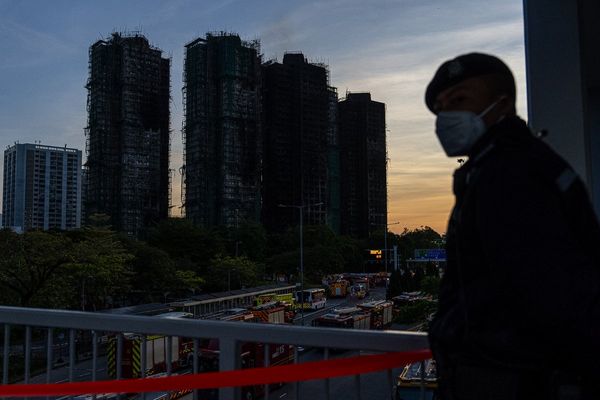
HOW well do you know the background of your suburb?
Take Wallsend, for example, or more specifically the area around Wallsend's Brickworks Park off Douglas Street, which only formally opened as parkland in April 2006.
My recent story about the site certainly piqued the interest of readers. If nothing else, it showed the widespread curiosity in the place demonstrated by comments from both locals and outsiders.
The reactions ranged from memories of an adventurous bike rider, Mark, who, in his youth, roamed over bush tracks in the area and out to West Wallsend, to recollections of coal trains trundling around central Wallsend, and a railway bridge on Newcastle Road. Cyclists simply knew the brickworks site as 'three poles', after the three power transmission lines going through bushland.
Today's local history yarn is a meander down memory lane for many, and clearly illustrates how dramatically the landscape can change in just one part of one suburb over several decades.
Looking at the modern landscape today (and comparing sites with old photographs) makes you realise the monumental changes that have occurred around Wallsend in successive generations.
Any 19th century Wallsend miner would not recognise the contours of his old suburb today.
I'm not from Wallsend, so a little more digging recently opened my eyes to what the past contained. I should have remembered there were once about seven kilometres of (coal) railways around Wallsend. And that the suburb even had a railway station off Cowper Street and there was even a landmark Railway Hotel nearby.
Sadly, the solid, two-storey stone building on the major junction of two streets is no longer there to remind us of old Wallsend in its heyday. It traded between 1875 and 1908 and then became the home of an old lady. The bulky building was controversially demolished in 1967 and its elderly tenant evicted to allow for road widening with increasing local traffic. It had become a visual hazard.
Wallsend was once a prominent 19th century mining township with about 7500 miners and their families. Our Hunter township took its name from the North England town with links stretching back to the Roman Empire. Newcastle upon Tyne's Wallsend was then on Rome's frontier (Hadrian's long defensive wall is nearby).
The Newcastle Wallsend Coal Company (NWCC) began mining locally in 1861 and by 1900 held an immense 9000 acres of land from Cockle Creek to Hexham. It also had its own railway line which joined the public, or Great Northern Railway (or GNR), near Waratah to ship its coal, much of it to distant California.
By 1890, the NWCC operations was described as being the largest in the Southern Hemisphere. The company even erected the first steam cranes on Newcastle wharves to export coal overseas.
The company's line branched off the GNR at Hanbury Junction to go into Wallsend to service the NWCC's A, B and C pits virtually all in a line going south-west. Originally the rail line divided the rival townships of Plattsburg and Wallsend. In 1953, the company said it was ending its 93-year-old coal line into central Wallsend. The rail was later lifted up and recycled.

But to the east, near the present Wallsend Brickworks Park close to the border of Jesmond and Wallsend, the NWCC had been also operating.
That prompted Weekender reader Brian to say the NWCC's New Tunnel Colliery existed there (later known as the Elermore Tunnel Colliery) which may have continued until finally closing in 1959. It had started producing coal in 1874 until 1914, then apparently worked intermittently under new ownership. A newspaper article from July 1932 reported the last 34 employees had been given notice at the 'historic colliery' which was closing for an indefinite period.
At it peak, the NWCC employed 800 men and boys (others claim 1100 employees) throughout the Wallsend district. In 1915, a Mr F.J. Maddison had made an arrangement with the NWCC to work the New Tunnel which then gained a new name under his control.
Meanwhile, before it was parkland, the Wallsend Brickworks (1891-1977) was adjacent to the New Tunnel Colliery. It supplied thousands of 'red belly' coloured bricks each week for industry, new homes and to build the University of Newcastle's Great Hall.
The long demolished brickworks site, parallel to present Douglas Street going south, is the location of our 'new' urban oasis (since 2006). Completely gone also are the myriad rail lines to its north, probably running close to the border of Wallsend's present Ausgrid site. These tracks then all merged into the lone New Tunnel rail line that continued north. It swung behind what is now Stockland Centre at Jesmond to a junction near Blue Gum Road and University Drive.
At this point, Maitland author Alek Schulha revealed to me a hidden link between Wallsend and the later Greta Migrant Camp (from 1949). Originally built as an army camp, by April 1940 there were a staggering 450 buildings on site and it was the largest army training facility in Australia. The first contract was to build 138 wooden huts, most of them 60ft (18.1 metres) long and including 70 sleeping huts, 10 dining huts and six kitchens.
"And contracts for these buildings all had to be completed in 30 days," Schulha said. He came across Wallsend's link during research for his 2020 bestselling book, Beneath the Shadows of Mount Molly Morgan.
Schulha said four businessmen - Parrey, Orrett, Compton and Everett - once owned Wallsend Brickworks. In the late 1930s and early 1940s the brickyard pressed the majority of the two million bricks used for the foundations for the 450 buildings at Greta.
Greta Camp closed in 1960 and the site was sold in 1980. Most structures were also sold and removed, the owners also taking the brick piers with them to sites scattered throughout the Hunter Valley.
Schulha said the Wallsend brickyard had developed a special 'Greta brick' with the aim of greatly changing the building timetable for all new army buildings.
"Their double-pressed brick (one large brick about the size of two normal house bricks side by side) was made to speed up construction time. I would love to find one of these bricks," Schulha said.







